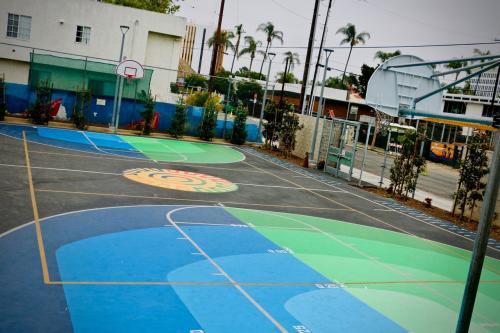As we reach a new stage of the pandemic, many families are seeing the light at the end of a very long tunnel. Masks have been lifted, travel bans have eased, and keeping kids a safe distance from each other is no longer the norm. While this is encouraging news, parents have experienced unprecedented levels of stress in the past few years and emerging research suggests that there is an increase in challenging behaviors and developmental delays in children born during or just before the pandemic (“The COVID generation”). One area of particular concern is how years of limited social interaction—remote school, no birthday parties, and playdates over zoom—have affected children’s social and emotional development.
As we continue to navigate and adjust to life beyond the pandemic, it is important to support children’s social and emotional awareness by building their language and communication skills.
At the start of the pandemic, we shared some strategies to help children interpret people’s expressions when their faces were covered by masks in a Brookings blog. We were concerned about young children’s language development since they rely on caregivers’ facial expressions and tone of voice to regulate their response toward people and new situations—a form of emotional communication developmental researchers call social referencing. Now, as we reach a new stage of COVID-19, we want to help families and caregivers boost their children’s social and emotional development after many years of limited interaction. This is the topic of our new book The Emotionally Intelligent Child.
Helping children build “emotion” language skills
One of the best ways to build children’s social and emotional skills is through enhancing their language and communication. Research supports that talking to children about emotions is one of the main predictors of emotional competence—how children learn to express and control their emotions and recognize the emotions in others. Language is the bridge between self and other, and there are many ways to support growing children’s language in the area of social and emotional awareness. Here are some strategies that we suggest:
- Talk with your child about emotions in many different settings. For example, if you and your child are at the park and another child is scared to go down the slide, use what you witness as an opportunity to talk about feelings. Ask your child if they can name the feeling the child on the slide might be experiencing. Then, try asking your child why they think the other child might be feeling this way and encourage them to notice the facial expression, body language, and tone of voice of the scared child. This helps your child attune to non-verbal cues to recognize the feelings of others.
- When you talk with your child about emotions, wait for your child to share first and then share your thoughts. This gives your child a chance to form their own understanding of emotions and allows them to use the vocabulary they know in context.
- Read stories to your child to build emotional vocabulary. Look for books that show relationships and have illustrations that convey emotions and use language to describe how characters feel. Even if the story doesn’t specifically mention emotions, you can ask your child questions about the characters’ feelings and how the characters interact with each other. For example, you might ask, “How do you think the character is feeling now?” and “What would you say to the character(s) to help the situation?”
- Let your child know that everyone has a private, mental world. Children in the early grade school years discover that feelings can be hidden, noting that how one looks on the outside might not match what one is experiencing internally. Share your mental world, so that they’ll share theirs with you.
- Help your child understand that emotions are always changing. Play a game with your child: Set a timer to go off every five minutes for 20 minutes, then go about doing your business. When the timer goes off, share your emotions (record them on a piece of paper). At the end of 20 minutes, take stock of how many different feelings were felt.
Language is a powerful tool that enables us to bond with others and understand ourselves. As we continue to navigate and adjust to life beyond the pandemic, it is important to support children’s social and emotional awareness by building their language and communication skills. We outline many other tools in our book to “parent with patience” and nurture children’s development as they gain social awareness and emotional balance.








Commentary
Talking about emotions: How to support children’s social and emotional development through language
June 22, 2022